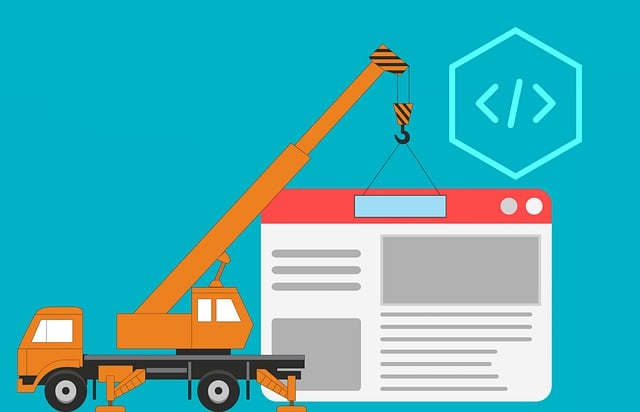UI design, an art and science, enhances user interaction with digital products by creating visually appealing and intuitive interfaces. It aims to make technology accessible and enjoyable through simple navigation and visual hierarchy. UX, a critical component, focuses on efficient interaction, bridging appearance and usability. Consistent visual identity, established through color, typography, and style guidelines, fosters familiarity and trust, simplifying navigation. Robust Information Architecture organizes content intuitively, empowering users to locate information effortlessly. Usability heuristics, derived from user research, ensure consistency and clear feedback for user actions. Prototyping and user testing facilitate iterative refinement, leading to engaging, user-centric designs. Current trends emphasize minimalism, clean layouts, and visually appealing aesthetics, while advanced tools like Adobe XD, Figma, responsive design frameworks, and JavaScript libraries enable efficient, collaborative UI/UX creation for positive user experiences.
In the digital realm, exceptional UI design is the linchpin that transforms websites from mundane to mesmerizing. This article navigates the intricate world of UI/UX design, a game-changer in website development. We explore foundational principles like understanding user needs and creating consistent visual identities. Delve into information architecture, usability heuristics, and iterative prototyping for seamless user experiences. Discover trending best practices and powerful tools, empowering you to craft modern, engaging websites that captivate users.
Understanding UI Design: Principles and Goals

UI design, or user interface design, is an art and science that shapes how users interact with digital products, primarily websites and applications. It involves creating visually appealing and intuitive interfaces that guide users through a seamless experience. The primary goal is to make technology accessible and user-friendly, ensuring that the interaction between the user and the product is efficient and enjoyable.
Key principles of UI design include simplicity, consistency, and visual hierarchy. A well-designed UI should offer a straightforward navigation structure, with elements arranged logically to direct users’ attention. This creates an intuitive experience where users can effortlessly find information or perform tasks. Additionally, maintaining visual consistency across the interface ensures users understand the functionality of different elements, fostering familiarity and ease of use.
The Role of User Experience (UX) in Website Design

User Experience (UX) is a pivotal aspect of website design, shaping how users interact and engage with digital platforms. It goes beyond aesthetics; UX focuses on creating intuitive, accessible, and efficient user journeys. A well-designed UX ensures that websites are easy to navigate, offering seamless experiences that cater to user needs and preferences. This involves understanding target audiences, information architecture, interaction design, and usability testing to eliminate friction points and enhance satisfaction levels.
In the realm of UI design, the emphasis is on visual elements, layouts, and aesthetics. However, it’s UX that bridges the gap between a website’s look and its usability. By prioritizing user needs, designers can create interfaces that not only captivate but also deliver. This integration ensures websites are more than just visually appealing; they become tools that users rely on, fostering positive interactions and encouraging exploration.
Creating a Consistent Visual Identity

In UI design, establishing a consistent visual identity is paramount for creating an engaging and user-friendly website experience. This involves crafting a unique and cohesive look that reflects the brand’s essence across all pages. Designers achieve this by defining a set of guidelines, including color palettes, typography choices, and style rules, which become the visual language of the site. By adhering to these principles throughout the design process, users subconsciously recognize and connect with the brand, fostering a sense of familiarity and trust.
A consistent visual identity also simplifies navigation, as users can anticipate where to find certain elements based on established patterns. This predictability enhances usability, allowing visitors to effortlessly explore the website’s content. Moreover, it contributes to a polished and professional aesthetic, setting the site apart from competitors and leaving a lasting impression on users. Ultimately, this attention to visual detail in UI design significantly influences the overall user experience, encouraging exploration and prolonging time spent on the platform.
Information Architecture: Organizing Content for Seamless Navigation

Effective UI/UX design for websites starts with a solid Information Architecture (IA). IA involves organizing content in a way that makes sense to users, streamlining navigation and enhancing usability. A well-structured IA ensures that users can effortlessly find what they’re looking for, promoting seamless interactions and reducing frustration.
Considerable thought should be given to hierarchical labeling, grouping related content, and establishing logical flows. This includes intuitive categorizations, clear labeling, and easy-to-understand menus. By prioritizing user needs and behavior patterns, designers can create an IA that supports efficient navigation, ultimately elevating the overall UI design and providing a delightful user experience.
Usability Heuristics for Effective Interaction Design

In the realm of UI/UX design, usability heuristics serve as guiding principles for creating effective and intuitive interaction designs. These heuristics, often referred to as “rules of thumb,” are based on extensive user research and aim to simplify complex web interactions. By adhering to these guidelines, designers can ensure that websites are easy to navigate, understand, and use. One fundamental heuristic is consistency, where elements should maintain a uniform placement, behavior, and appearance across the entire UI design. This consistency fosters familiarity, enabling users to predict and efficiently interact with the website.
Another crucial heuristic is visibility of system status, which means providing users with clear feedback about their actions’ consequences. Effective UI designs ensure that changes are instantly noticeable, whether it’s a form submission confirmation or an error message. This immediate feedback helps users understand their interactions and reduces confusion, ultimately enhancing the overall user experience in line with the objectives of UI design.
Prototyping and User Testing: Iterative Improvement

Prototyping and user testing are integral parts of the UI/UX design process, enabling designers to refine and improve their creations iteratively. By building interactive prototypes, designers can simulate the actual user experience, allowing for early feedback and identification of potential issues or usability problems. This step is crucial in the UI design process as it bridges the gap between concept and realization, ensuring that the final product meets user expectations.
User testing provides invaluable insights into how real users interact with the website or application. Through structured interactions and observations, designers can gather qualitative and quantitative data, pinpointing pain points, understanding user preferences, and making data-driven decisions. This iterative approach fosters continuous improvement, leading to a more intuitive, engaging, and user-centric UI design that enhances overall user satisfaction.
Trends and Best Practices in Modern UI/UX Design

In the dynamic landscape of web development, UI/UX design trends and best practices continually evolve to meet users’ changing expectations. Modern UI design leans heavily on minimalism, focusing on clean layouts, intuitive navigation, and a visually appealing aesthetic that prioritizes user comfort. Simple yet effective use of whitespace, bold typography, and subtle color palettes create interfaces that are both aesthetically pleasing and easy to engage with.
Best practices in UX design emphasize functionality and accessibility. Interactive elements should be clearly labeled and consistent across the site or app. User flows should be optimized for seamless navigation, ensuring users can accomplish their tasks without friction. Additionally, design tools like A/B testing and user feedback integration enable designers to refine interfaces based on real-world interactions, ultimately enhancing user satisfaction and driving better conversion rates.
Tools and Technologies for Efficient Website Development

In today’s digital landscape, efficient website development requires a robust toolkit for seamless UI/UX design. Designers and developers have a plethora of tools at their disposal, each catering to different aspects of the design process. For instance, platforms like Adobe XD and Figma enable designers to create wireframes, mockups, and prototypes with ease, facilitating smooth collaboration and feedback loops. These tools often integrate with popular coding languages and frameworks, ensuring a straightforward transition from design to development.
Furthermore, advanced technologies such as responsive design frameworks (e.g., Bootstrap, Tailwind CSS) streamline the process of building adaptable websites that cater to various devices and screen sizes. Interactive elements, animations, and micro-interactions can be achieved through libraries like React or Vue.js, enhancing user engagement and visual appeal. By leveraging these tools and technologies, designers and developers can efficiently bring compelling UI designs to life, ensuring a positive user experience from the get-go.
